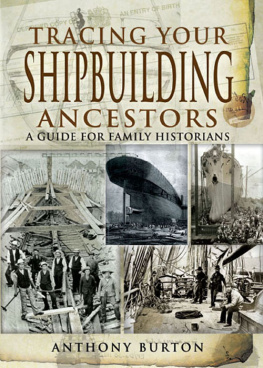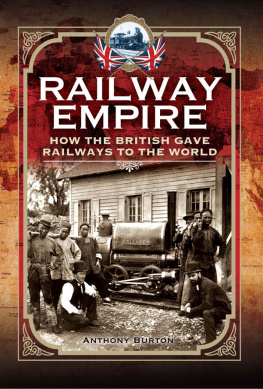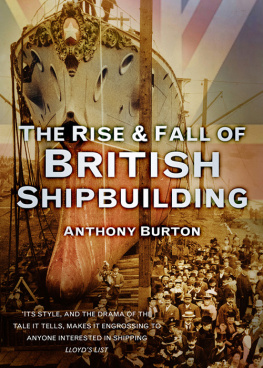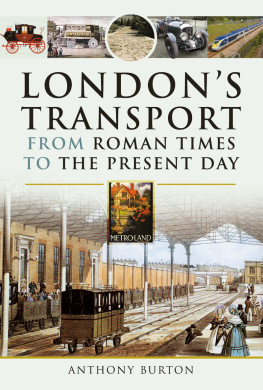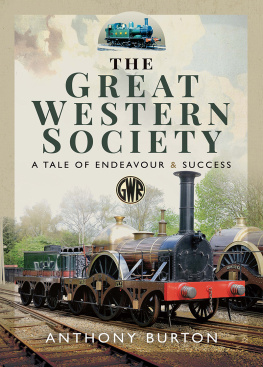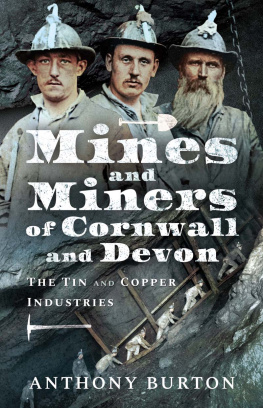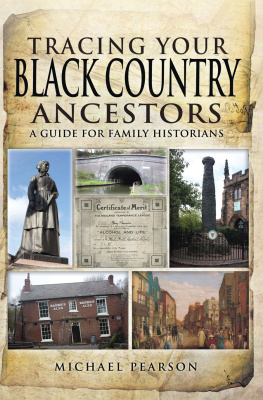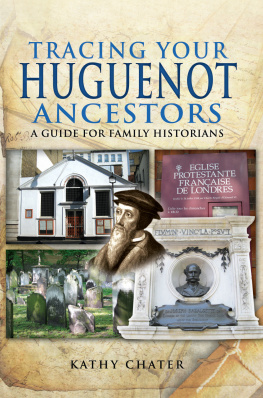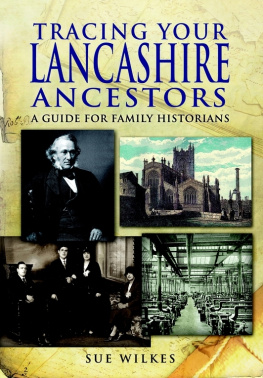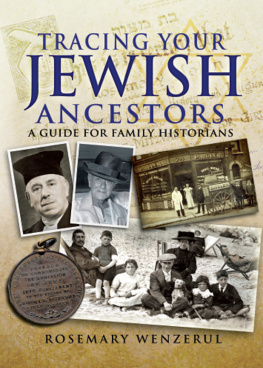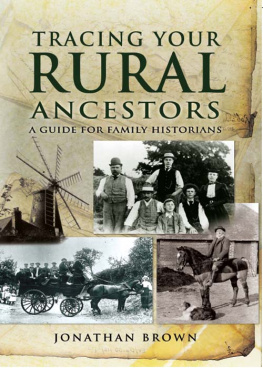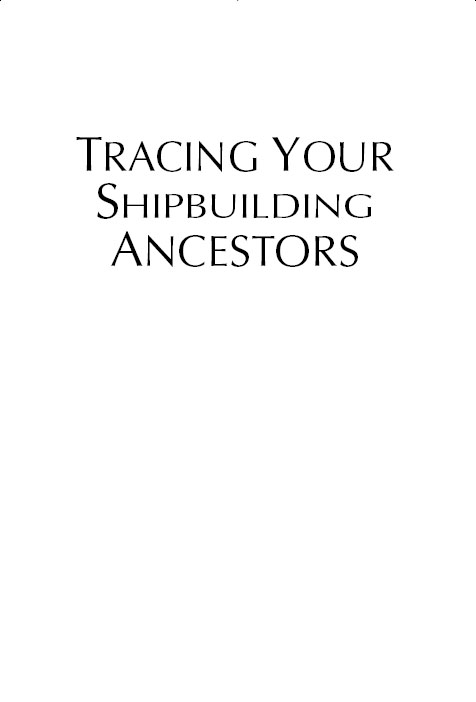
FAMILY HISTORY FROM PEN & SWORD
Tracing Your Yorkshire Ancestors
Rachel Bellerby
Tracing Your Royal Marine Ancestors
Richard Brooks and Matthew Little
Tracing Your Pauper Ancestors
Robert Burlison
Tracing Your Labour Movement Ancestors
Mark Crail
Tracing Your Army Ancestors
Simon Fowler
A Guide to Military History on the Internet
Simon Fowler
Tracing Your Northern Ancestors
Keith Gregson
Your Irish Ancestors
Ian Maxwell
Tracing Your Scottish Ancestors
Ian Maxwell
Tracing Your Air Force Ancestors
Phil Tomaselli
Tracing Your Secret Service Ancestors
Phil Tomaselli
Tracing Your Criminal Ancestors
Stephen Wade
Tracing Your Police Ancestors
Stephen Wade
Tracing Your Jewish Ancestors
Rosemary Wenzerul
Fishing and Fishermen
Martin Wilcox
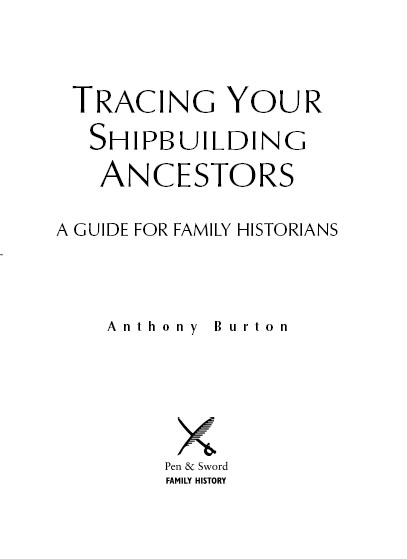
First published in Great Britain in 2010 by
PEN & SWORD FAMILY HISTORY
an imprint of
Pen & Sword Books Ltd
47 Church Street
Barnsley
South Yorkshire
S70 2AS
Copyright Anthony Burton 2010
ISBN 978 1 84884 096 6
Digital Edition ISBN 978 1 84468 688 9
The right of Anthony Burton to be identified as Author of this Work has
been asserted by him in accordance with the Copyright,
Designs and Patents Act 1988.
A CIP catalogue record for this book is
available from the British Library.
All rights reserved. No part of this book may be reproduced or transmitted in any form or by any means, electronic or mechanical including photocopying, recording or by any information storage and retrieval system, without permission from the Publisher in writing.
Typeset in Palatino and Optima by
Phoenix Typesetting, Auldgirth, Dumfriesshire
Printed and bound in England by
CPI UK
Pen & Sword Books Ltd incorporates the Imprints of
Pen & Sword Aviation, Pen & Sword Maritime, Pen & Sword Military,
Wharncliffe Local History, Pen & Sword Select, Pen & Sword Military
Classics and Leo Cooper.
For a complete list of Pen & Sword titles please contact
PEN & SWORD BOOKS LIMITED
47 Church Street, Barnsley, South Yorkshire, S70 2AS, England
E-mail:
Website: www.pen-and-sword.co.uk
PREFACE
W henever one sits down to write any sort of history, there is always one question that has to be answered: which units do you use? A common problem in Britain comes with currency, where wages for example were, until the middle of the twentieth century, paid in pounds, shillings and pence. I have used the old monetary units, because that was what was actually paid. A workman in the early nineteenth century would get, say, 15s a week, not 0.75. So I have followed the convention of putting such sums in the old money first, with the modern equivalent in brackets afterwards. There remains the ever-present problem of making sense of money. Clearly, to take the example above, a wage of 0.75 would be ludicrous today, and we can only make sense of it by knowing what it would purchase two centuries ago. A convenient measure would be one of the basics of life: the loaf of bread. Our nineteenth-century man could buy 180 large loaves with his weeks wage. So if, instead of thinking of his wage in terms of pounds, shillings and pence, we look at it in terms of loaves of bread, we can do a simple sum to get a modern equivalent. In order to buy a loaf today we would probably have to pay 1.50 so the 180-loaf wage is now equivalent to 270. It is always as well to remember that figures for costs, wages or anything else are only meaningful in terms of what the currency would buy at that time.
Units present rather more of a problem when it comes to physical measurements. We have gone metric but our forebears used the old Imperial measures and a straight conversion often leads to seemingly illogical results. Why, for example, would an engineer build a steam engine with a 45.72cm diameter cylinder? The answer, of course, is that he did nothing of the kind. He built, as accurately as he possibly could, one with an 18-in cylinder. Although using metrical measures instead of feet and inches does not always produce quite the same sort of absurdities, I have preserved the original units. They are the ones the designer worked in. There is one unit, at least, that has remained unchanged for centuries the knot. This is a speed of 1 nautical mile per hour, the nautical mile being 6,080ft compared with 5,280ft for the miles we measure on the road. Why this difference? The answer is that the nautical mile is far more useful to the navigator at sea, working with charts. It is basically equivalent to one minute of latitude, so anyone with a chart can measure off distances using a pair of dividers, regardless of the scale of the map. This means that a speed of 30 knots, for example, is roughly equivalent to 34.5 miles per hour.
The name knot takes us right back to the age of sailing ships. In order to measure speed a specially shaped piece of heavy wood, the log, was attached to a rope and thrown overboard. The rope had knots at set intervals. As the ship sailed away, the log remained floating where it was left, and as the rope was gradually paid out, the number of knots that passed through the sailors hand was counted for a set period of time. The result was entered in the log book. It is difficult to believe that when I log in on my computer I am making a connection with someone throwing a piece of wood off a sailing ship. It is interesting to note how many terms from the world of seafaring have entered everyday use, emphasising the fact that Britain is a maritime nation. So it should not be too surprising to find that most of us, at some time or other, had connections with ships and the sea. I hope this book will help the reader make one of those connections with those who built the ships that once crossed the oceans of the world.
PICTURE CREDITS
Illustrations on pages x, 9, 13, 35, 36, 38, 41, 45, 46, 59, 67, 69, 78, 115, Anthony Burton; 15, 17, The Master and Fellows, Magdalene College, Cambridge; 23, British Library; 25, 70, Gwynedd Archives; 26, Whitehaven Museum; 64, Scottish Maritime Museum; 68, 80, Glasgow Museums, The Peoples Palace; 75, Yarrow Shipbuilders Ltd; 82, Clyde Shipping Co.; 83, Tyne and Wear Archives; 87, 103, Strathclyde Regional Archives; 93, Working Class Movement Library; 98, Business Records Centre, University of Glasgow; 105, Scottish Record Office; 117, North News and Pictures.
INTRODUCTION
T here has probably never been an industry anywhere that offered its workforce a prouder moment than the day on which a great ship was launched, sliding down the slipway to leave the land behind and take its rightful place out on the water. On that day every single person who worked on the vessel would turn out to watch and would bring their families along to share the occasion. The fact that this is an industry with such a romantic end product adds an extra level to the interest and pleasure of researching family history. There is the possibility, in imagination at least, that we can travel back in time and share in the pride and excitement of that great day. Which is why, having once discovered a connection to the industry, we want to know more. What did that particular yard make? What sort of ships did my ancestor work on? Is there any chance that I might be able to identify a particular vessel? It will not often be possible to be that specific, but let me give an example from my own family history as a form of encouragement.
Next page
